Between a fair amount of time away from home and baking the same old reliable stuff, I haven't been much of a blogging presence around these parts lately.
On our last morning in Trieste last month, I stopped into the small Despar supermarket to check out their flour section and came across a flour called Tritordeum, which I had never heard of before. Those in mainland Europe may be familiar with it as well as a few old-timers on TFL who may recall reading our Abel Sierra's few postings about this flour in 2014, including a posting for baguettes.
Tritordeum is a new hybrid grain, a cross between barley and durum, originally bred and cultivated in Spain (hence Abel's familiarity with it) and available mostly only in Spain and Italy and perhaps a few other European countries. I picked up a 500g bag and slipped into my suitcase for the long ride home.
A single bag wasn't going to get me very far and, indeed, I used all 500g on this dough. No room for do-overs, this was a one-shot deal for me.
Somewhat following Abel's outline, I changed around a few things. Here is his writeup on his related YouTube entry. Even for the non-Spanish speakers, the majority of this should be understandable:
- Autólisis de 15 minutos. Amasar todos los ingredientes hasta conseguir una masa elástica pero no muy fina. Dejar reposar en bloque unas 2 horas en un lugar fresco. Doblar la masa una vez en medio de la fermentación en bloque. Formar con delicadeza. Fermentación final de una hora, aproximadamente. Hornear a alta temperatura con vapor, y bajar a 200 grados al cabo de unos minutos.
Consejos a la hora de trabajar con tritordeum: no amasar en exceso. No sobrefermentar. Meter al horno cuando la masa aún esté joven. Horno caliente y con vapor.
I didn't have enough tritordeum @20% prefermented flour to also make the levain. Here are differences:
- 125% hydration AP levain vs. his presumed 100% hydration Tritordeum levain.
- Added a pinch of Diastatic Malt Powder to compensate for this unmalted flour. I don't have a clue whether this is kaput or not, having bought it 4 years ago and can't recall the last time that I used it.
- Overall hydration at 70 % vs. Abel's 65%.
- Autolyse 20 min. vs. Abel's 15 min.
- 75 French Folds, 5 minute rest, 75 FF more vs. Abel's modest bench-top kneading.
- Letter Folds at 45 and 90 min. vs. Abel's 1 fold at 60 min. 2 hr. total bulk rise before the retard.
Due to the long cold retard, I eliminated the IDY.
The dough was magnificently easy and handleable throughout the French Folds, and incredibly extensible during my bench-top Letter Folds. A dream. Off to cold retard it went. And that's when Happy Days ended and trouble in River City began.
Upon divide, and pre-shape I realized I was dealing with a wholly different animal (vegetable?). This dough was quite moist, still unbelievably extensible. But getting a baguette shape out of it was a step away from trying to wrangle cats. As the dough is a hybrid of barley and durum, I opted to coat two of the three in sesame seeds - my go to version for a semolina bread. And even that was a challenge.
I was pretty dejected as I placed them onto a well floured couche for the remainder of their overnight retard.
I can state with certainty that this was right up there with one of the two most difficult doughs that I have tried to shape so far. And no second chances. I unfurled the couche early this morning to find that they had flattened out. Grr. Scoring them was less of a challenge than I anticipated, and off they went into a steamed 460dF oven.
Surprisingly, the dough was quite forgiving as it baked, and although I am unimpressed with the final grigne (for me) and the baguettes are still flat, the results are way better than I could have anticipated. And most surprisingly is how open the crumb is. So far the taste is most similar to a semolina bread. And yes, the crumb is that yellow.
You can read about Tritordeum here.
The 500g bag with my bubbling AP levain in the background.
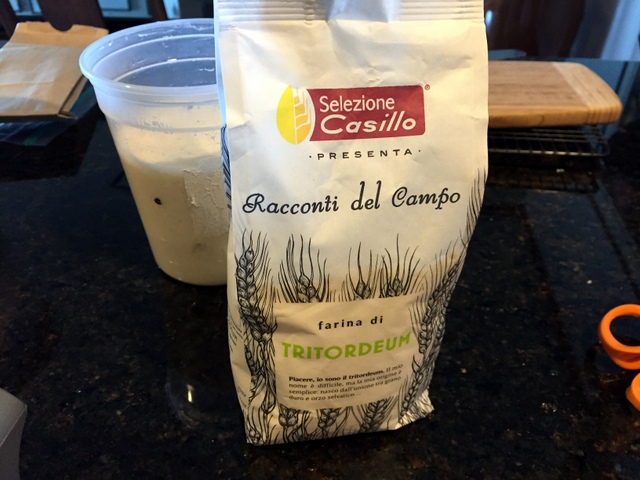
Post French Folds, when the blob was still well behaved.
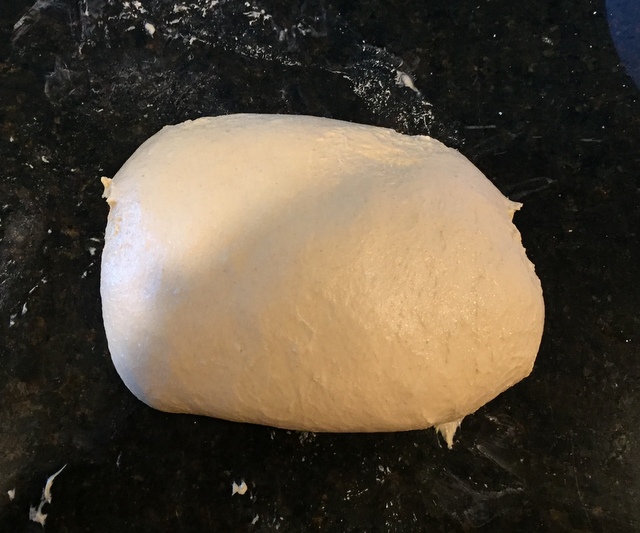
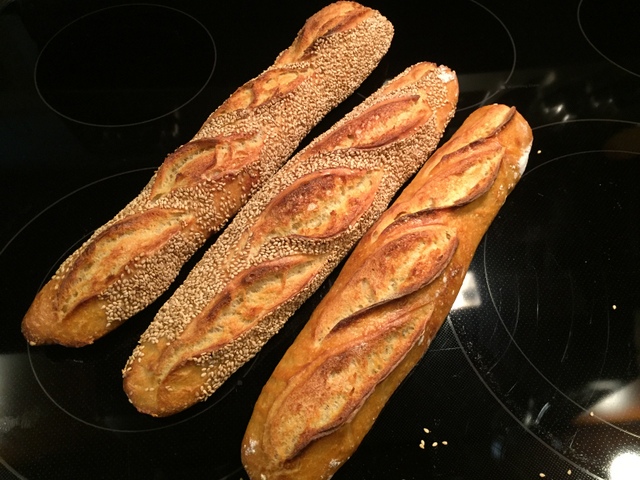
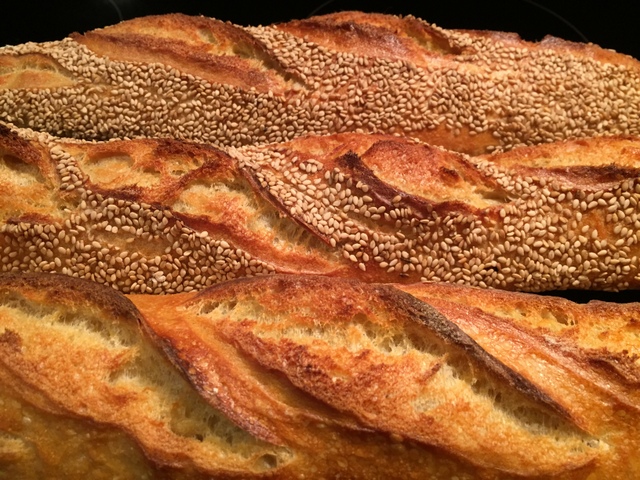
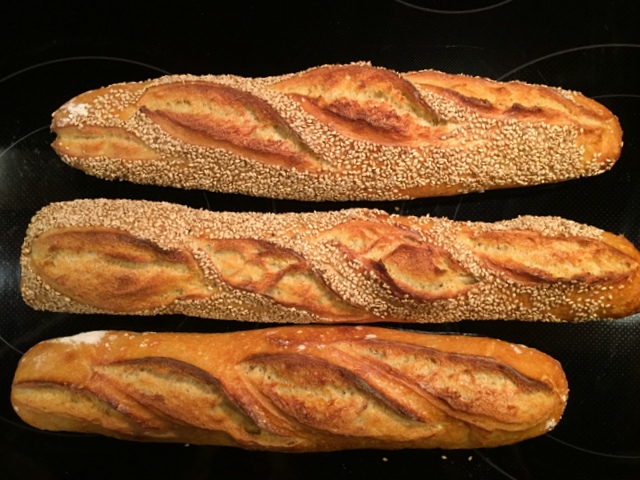
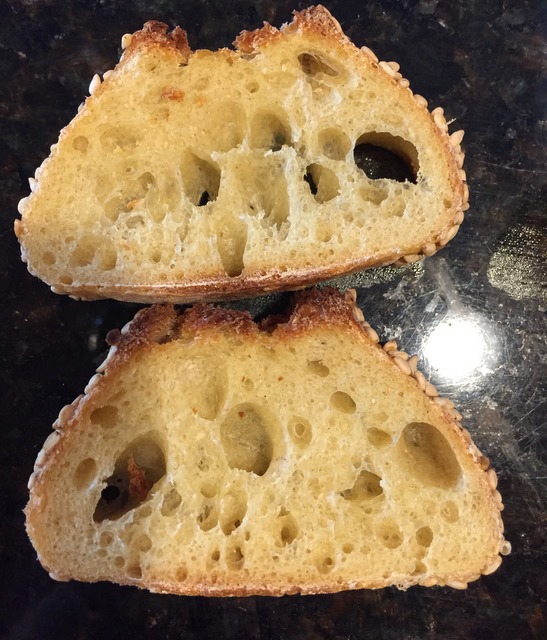
3 baguettes/long batards x 350g
And just for fun:
Flours in a Porec, Croatia supermarket
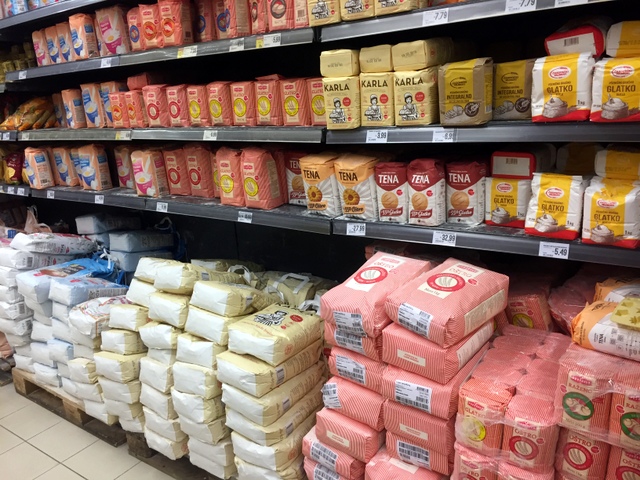
Flours in a small market in Krajska Gora, Slovenia in the midst of the magnificent Julian Alps.
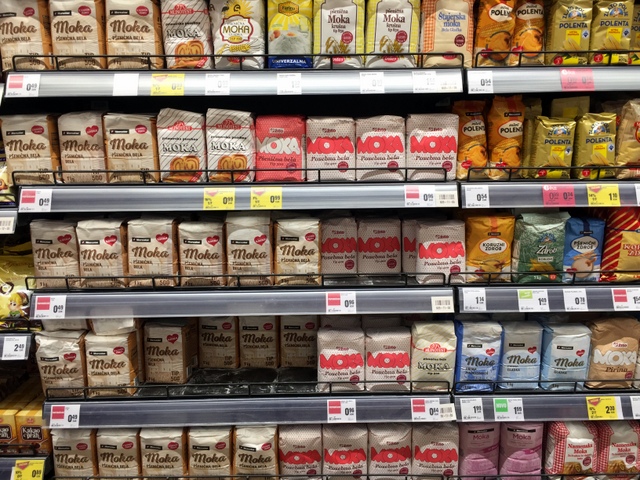
alan